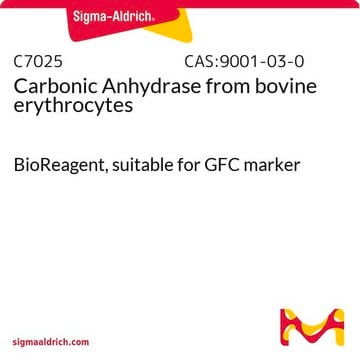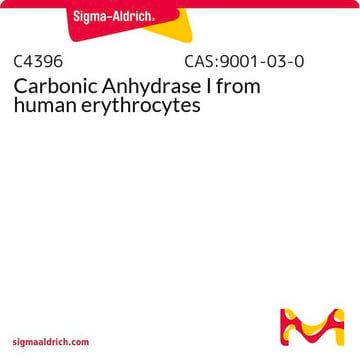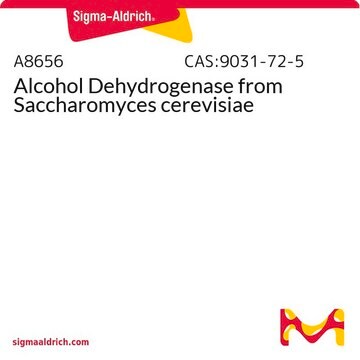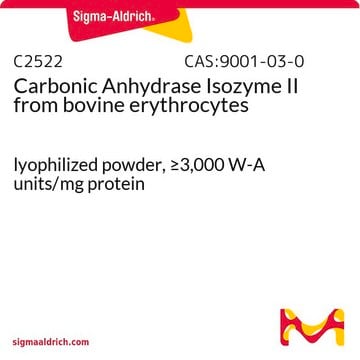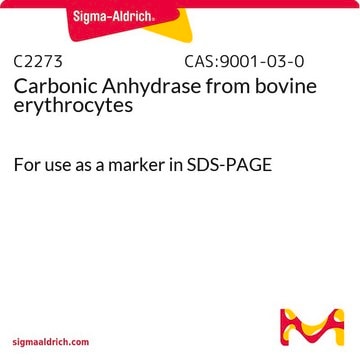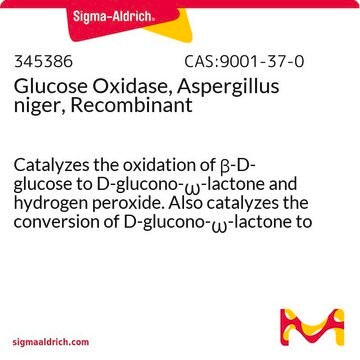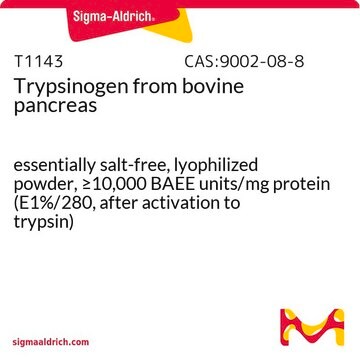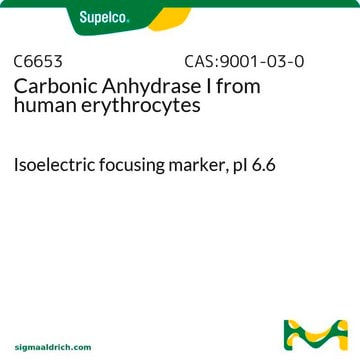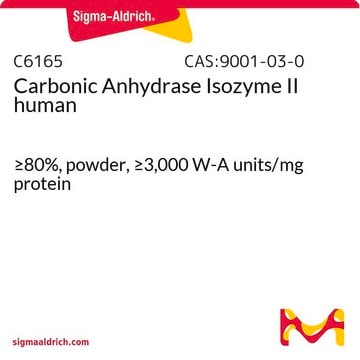The activity of this enzyme is established using a 0.02 M Tris buffer with a starting pH of 8.3 at 0°C. One unit will cause the pH of a 0.02 M Trizma buffer to drop from 8.3 to 6.3 per min at 0°C. However, the optimum pH and temperature is highly dependent on the specific application. There are a number of publications regarding the working parameters for this material. Please see the link below to review an example:
https://pubmed.ncbi.nlm.nih.gov/10701452/#:~:text=It%20was%20determined%20that%20the,61706%20Dalton%20by%20gel%20filtration.
Wichtige Dokumente
C2624
Carboanhydrase aus Rindererythrocyten
≥95% (SDS-PAGE), specific activity ≥3,500 W-A units/mg protein, lyophilized powder
Synonym(e):
Carboanhydrase aus Rindererythrocyten, Carbonat-Dehydratase, Carbonat-Hydro-Lyase
Größe auswählen
Größe auswählen
About This Item
Empfohlene Produkte
Biologische Quelle
bovine erythrocytes
Qualitätsniveau
Assay
≥75% protein basis (biuret)
≥95% (SDS-PAGE)
Form
lyophilized powder
Spezifische Aktivität
≥3,500 W-A units/mg protein
Löslichkeit
deionized water: >10 mg/mL
Lagertemp.
2-8°C
Suchen Sie nach ähnlichen Produkten? Aufrufen Leitfaden zum Produktvergleich
Anwendung
Biochem./physiol. Wirkung
Einheitendefinition
Signalwort
Danger
H-Sätze
P-Sätze
Gefahreneinstufungen
Resp. Sens. 1
Lagerklassenschlüssel
11 - Combustible Solids
WGK
WGK 3
Flammpunkt (°F)
Not applicable
Flammpunkt (°C)
Not applicable
Hier finden Sie alle aktuellen Versionen:
Analysenzertifikate (COA)
Die passende Version wird nicht angezeigt?
Wenn Sie eine bestimmte Version benötigen, können Sie anhand der Lot- oder Chargennummer nach einem spezifischen Zertifikat suchen.
Besitzen Sie dieses Produkt bereits?
In der Dokumentenbibliothek finden Sie die Dokumentation zu den Produkten, die Sie kürzlich erworben haben.
Kunden haben sich ebenfalls angesehen
-
What is recommand usage temperature and pH range?
1 answer-
Helpful?
-
-
What is the recommended storage conditions for "Carbonic Anhydrase, from bovine erythrocytes?
1 answer-
The recommended storage conditions for Solution of Carbonic Anhydrase, from bovine erythrocytes may be frozen at –20 °C for future use. It is advised to avoid repeated freezing and thawing. Stock solutions may be dispensed into working aliquots, frozen, and then discarded after 2–3 uses.
Helpful?
-
-
Is it possible to obtain information about the type of Carbonic Anhydrase (I or II) included in item C2624-carbonic anhydrase?
1 answer-
Product C2624, Carbonic Anhydrase from bovine erythrocytes, with a purity of ≥95% (SDS-PAGE), consists predominantly of CA II, with small levels of CA I and CA IV present.
Helpful?
-
-
What is the isozyme I or isozyme II of Carbonic Anhydrase from bovine erythrocytes (C2624 Carbonic Anhydrase)?
1 answer-
The product C2624, Carbonic Anhydrase from bovine erythrocytes, consists mainly of CA II. However, there are also small levels of CA I and CA IV present.
Helpful?
-
Active Filters
Unser Team von Wissenschaftlern verfügt über Erfahrung in allen Forschungsbereichen einschließlich Life Science, Materialwissenschaften, chemischer Synthese, Chromatographie, Analytik und vielen mehr..
Setzen Sie sich mit dem technischen Dienst in Verbindung.
